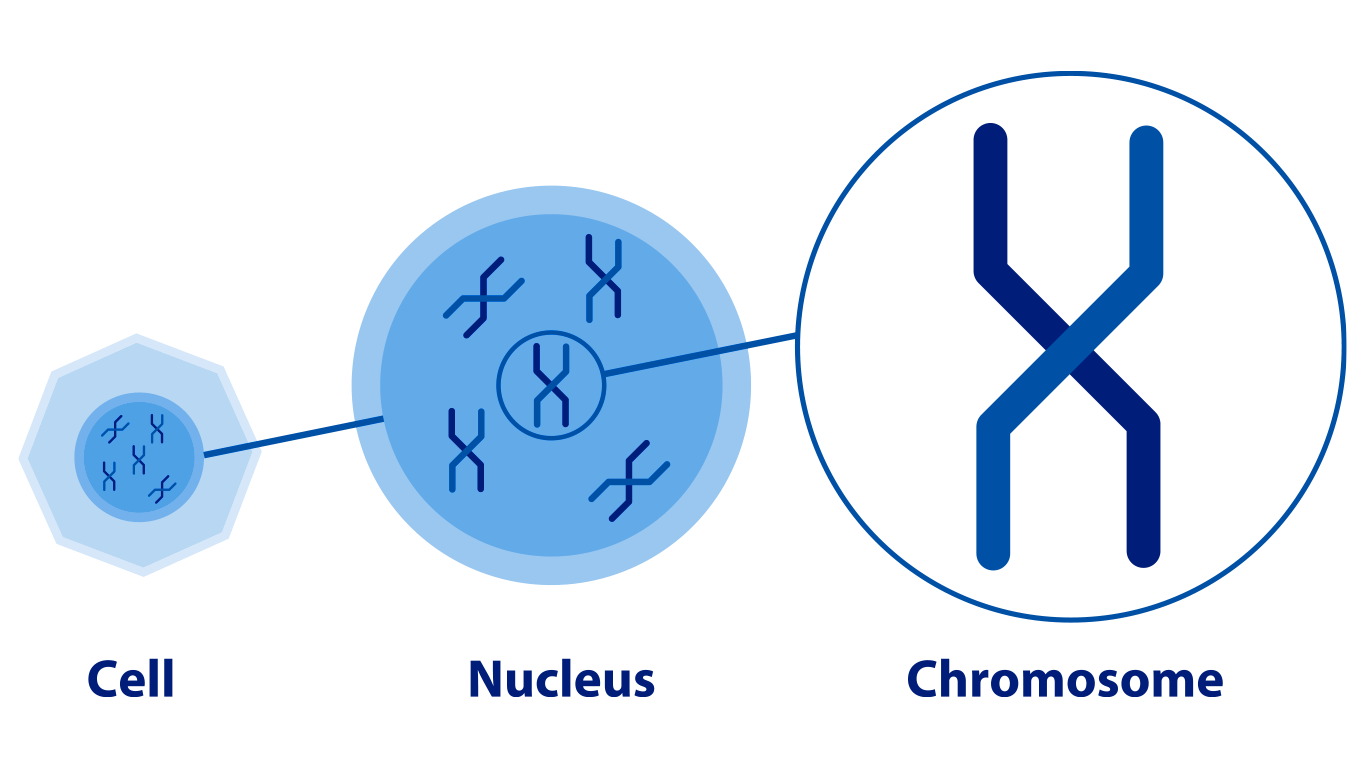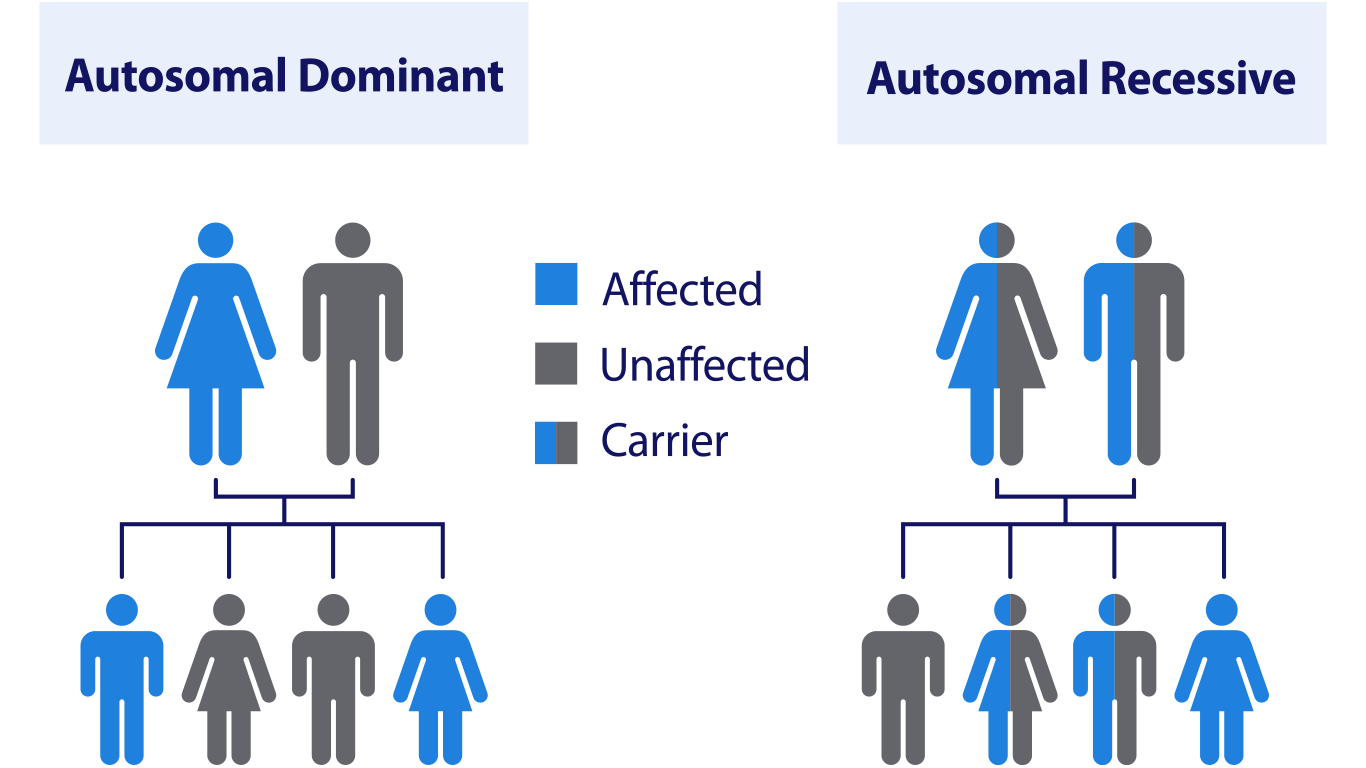Genetic Testing With MNG Laboratories
At MNG Laboratories, a LabCorp Company, our goal is to ensure that your experience with genetic testing is refreshingly easy from start to finish. Getting started is easy and the testing process is only a few simple steps:
- Step 1: Talk with your physician or a genetic counselor about testing
- Step 2: Submit a sample for analysis
- Step 3: MNG sequences your DNA
- Step 4: Your results are sent back to your physician and shared with you
Understanding Your DNA
In every human cell, there are 23 pairs of chromosomes, which are long threads of DNA coiled tightly together. Our DNA encodes individual genes, which carry the genetic instructions used in the growth, development, functioning, and reproduction of our body’s functions. Genes make up a person’s genotype, and contribute to each person’s attributes, ranging from eye color or blood type to complex physical abnormalities and genetic disorders.


What is a Variant?
A variant, sometimes called a mutation, is a permanent alteration in the DNA sequence that makes up a gene. Variants can range in size from a single base pair to large segments of a chromosome that include multiple genes. Everyone has genetic variants, but that doesn’t mean that a person will develop a disease or condition.
Autosomal Dominant:
A gene or trait passed down from either parent that only requires one copy to be physically expressed in their offspring. Only one affected copy of a gene is needed to cause a disease.
Autosomal Recessive:
A gene or trait that requires two copies to be physically expressed. In the case of a disorder, genes passed down from both parents must contain a variant for the offspring to be affected. If only one gene is affected, the person becomes a carrier of that disorder.
X-Linked:
A gene or trait that is only located on the X (sex) chromosome. Disorders which are X-linked usually affect males more severely than females. In males, X-linked disorders act dominantly, whereas in females, their additional X chromosome suppresses expression of the disorder. In some cases, females can be completely unaffected.
Should I Consider Genetic Testing?
To determine if someone has a disease-causing variant in their DNA that could lead to a disease or condition, genetic testing is available. There are a number of reasons why you might consider genetic testing, including:
Diagnostic Genetic Testing: making a diagnosis in a patient that is showing symptoms of a known genetic disease to confirm or exclude a genetic disorder in an individual showing symptoms of a known genetic condition.
Predictive Genetic Testing: testing a healthy adult for a genetic disease that is known in the family before they have symptoms of it.
Carrier Testing: finding out if potential parents carry a genetic mutation that they could pass onto their future children
Prenatal Testing: finding a genetic disease in an unborn baby
Conditions Diagnosed at MNG
Epilepsy
Although epilepsy is defined by a repeated pattern of unprovoked seizures, these episodes can take numerous forms corresponding to different types of epilepsy syndromes.
Movement Disorders
Movement disorders are characterized by abnormal form or timing of voluntary movement in individuals with normal strength and sensation.
Neurobehavioral
Our neurobehavioral portfolio encompasses rare genetic neurological disorders related to cognition, neurodevelopment, and neurodegeneration.
Neuromuscular
Neuromuscular disease includes a variety of disorders that interrupt the normal functionality of muscles.
Neurometabolic
Neurometabolic disease is a broad term used to describe a diverse group of disorders that impair the functionality of the central nervous system.
Mitochondrial
Mitochondrial disorders are a group of conditions attributed to dysfunction of the mitochondrial respiratory chain, resulting in a lack of energy production within different tissue types.
Patient Resources
After having genetic testing performed, be sure to go over your results with your healthcare provider and ask any questions you may have. Don’t be afraid to ask questions and ask for resources.
The following resources may be helpful:
Finding a genetic counselor in your area and learning how they can help: www.nsgc.org
Understanding health conditions, genes, and mtDNA: https://ghr.nlm.nih.gov/

